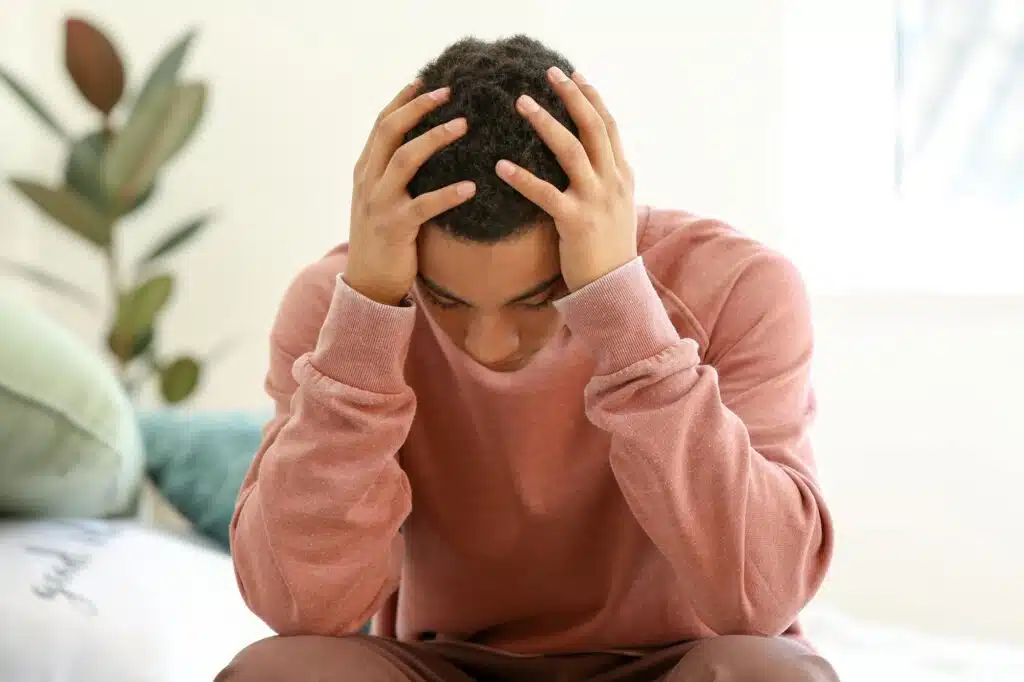Understanding Clinical Depression
Clinical depression, also known as Major Depressive Disorder (MDD), is a serious mental health condition that affects millions of people worldwide. This condition goes beyond typical feelings of sadness, creating persistent changes in mood, thoughts, and behavior that significantly impact daily life.
Key Diagnostic Criteria:
- Persistent depressed mood lasting at least two weeks
- Loss of interest in previously enjoyed activities
- Changes in sleep patterns
- Significant weight changes
- Fatigue or loss of energy
- Feelings of worthlessness or excessive guilt
- Difficulty concentrating
- Recurring thoughts of death or suicide
The severity of symptoms must cause noticeable disruption in your daily functioning to meet the clinical diagnosis threshold. You might struggle with basic tasks like getting out of bed, maintaining personal hygiene, or meeting work deadlines.
Impact on Daily Life:
- Reduced ability to maintain relationships
- Decreased work or academic performance
- Difficulty making decisions
- Withdrawal from social activities
- Physical health complications
Clinical depression affects each person differently, with symptoms ranging from mild to severe. Some people experience a single episode, while others face recurring episodes throughout their lives. Recognizing these symptoms and seeking professional help is crucial for effective treatment and recovery.
Moreover, it’s important to note that individuals dealing with substance abuse issues may find themselves in a vicious cycle where their addiction exacerbates their depression. In such cases, helping clients enjoy sobriety can be a critical step towards recovery from both addiction and clinical depression.
Different Types of Clinical Depression
Clinical depression comes in different forms, each with its own characteristics that influence how it’s treated. Here are the main types you should know about:
1. Major Depressive Disorder (MDD)
- Persistent sadness lasting two weeks or longer
- Changes in sleep and appetite
- Loss of interest in activities
2. Persistent Depressive Disorder (PDD)
- Chronic depression lasting two years or more
- Less severe but longer-lasting symptoms
- Fluctuating periods of major depression
3. Melancholic Depression
- Severe morning depression
- Significant weight loss
- Intense feelings of guilt
- Lack of reactivity to positive events
4. Atypical Depression
- Mood reactivity to positive events
- Increased appetite and weight gain
- Excessive sleep patterns
- Sensitivity to rejection
5. Seasonal Affective Disorder (SAD)
- Depression tied to seasonal changes
- Typically occurs during winter months
- Changes in sleep and energy levels
Each type requires specific treatment strategies, and symptoms can vary in intensity and duration. Understanding these differences helps healthcare providers create targeted treatment plans for better recovery outcomes.
Causes Behind Clinical Depression
Clinical depression arises from a combination of various factors, making each person’s experience unique. Research identifies three main categories of contributing factors:
1. Biological Factors
- Imbalances in neurotransmitters, especially serotonin and norepinephrine
- Disrupted brain circuits that affect emotion regulation
- Hormonal changes during pregnancy, postpartum, or thyroid conditions
- Structural differences in specific regions of the brain
2. Genetic Predisposition
- A 40% risk of inheriting depression from family members
- Multiple genes that influence susceptibility to depression
- Genetic variations that affect the body’s response to stress
- Patterns of DNA methylation that impact gene expression
3. Environmental Triggers
- Experiencing chronic stress and trauma
- Facing adversity or abuse during childhood
- Going through major life changes or losses
- Dealing with social isolation and relationship difficulties
- Struggling with substance use disorders
Brain imaging studies have shown altered activity patterns in individuals with depression, particularly in areas responsible for controlling mood, memory, and decision-making. The stress response system appears to be persistently activated, leading to increased levels of cortisol (the stress hormone) and inflammation throughout the body.
Recent research has also highlighted the importance of neuroplasticity – which refers to the brain’s ability to form new neural connections. Chronic stress can impair this process, while effective treatments have been found to help restore healthy adaptability in the brain.
Understanding these complex causes is crucial for healthcare providers as it allows them to develop targeted treatment approaches. By combining medication, therapy, and lifestyle modifications, they can address multiple aspects of the condition and provide more effective care.
Getting Diagnosed: Understanding the Process and Challenges
Receiving a clinical depression diagnosis involves a comprehensive evaluation process conducted by mental health professionals. Your healthcare provider will perform a mental status examination, which includes:
- Detailed assessment of mood patterns
- Evaluation of thought processes
- Analysis of behavior changes
- Review of sleep and appetite patterns
- Assessment of suicide risk
The diagnostic criteria require symptoms to persist for at least two weeks. Mental health professionals use structured interviews and standardized assessment tools to ensure accurate diagnosis.
Challenges in Distinguishing Clinical Depression
Distinguishing clinical depression from other conditions presents unique challenges. Similar symptoms can appear in:
- Bipolar disorder
- Seasonal affective disorder
- Normal grief responses
- Anxiety disorders
- Thyroid conditions
Role of Medical Professionals in Diagnosis
Medical professionals conduct blood tests and physical examinations to rule out underlying health conditions that might mimic depression symptoms. They also evaluate your personal and family history of mental health conditions to create a complete diagnostic picture.
Importance of Proper Diagnosis
A proper diagnosis forms the foundation for developing an effective treatment plan tailored to your specific needs and circumstances. In some cases, such as when substance use disorders are involved, specialized Med Mutual drug and alcohol rehab in Ohio or Aetna select coverage drug and alcohol rehab may be necessary to address these additional challenges.
Finding Effective Treatment Options for Clinical Depression
Clinical depression responds well to a combination of targeted treatments. Your healthcare provider might recommend several approaches working together:
Psychotherapy Options
- Cognitive Behavioral Therapy (CBT) helps identify negative thought patterns
- Interpersonal Therapy focuses on relationship challenges
- Psychodynamic Therapy explores past experiences affecting current emotions
- Group Therapy provides peer support and shared learning
Medication Treatments
- Selective Serotonin Reuptake Inhibitors (SSRIs)
- Serotonin-Norepinephrine Reuptake Inhibitors (SNRIs)
- Atypical antidepressants
- Tricyclic antidepressants
Each medication type works differently, and you might need to try several before finding the right match. Your doctor will monitor your progress and adjust dosages as needed.
Lifestyle Changes That Support Recovery
- Regular exercise – 30 minutes of moderate activity daily
- Consistent sleep schedule – 7-9 hours nightly
- Balanced nutrition with mood-supporting foods
- Stress reduction techniques like meditation
- Social connection and support networks
- Daily routine structure
- Light therapy, especially for seasonal depression
These approaches work best when combined. Your treatment plan should adapt to your specific symptoms, lifestyle, and response to different interventions. Many people find relief through a personalized mix of therapy, medication, and lifestyle modifications.
If you’re looking for professional help, consider visiting a depression treatment center where a combination of these therapies can be tailored to your needs. It’s also important to remember that recovery doesn’t stop once treatment ends; ongoing support through an aftercare alumni program can be crucial in maintaining mental health stability.
The Daily Impact of Living with Clinical Depression
Clinical depression casts a heavy shadow over daily life, affecting personal bonds and social connections. People with depression often withdraw from loved ones, struggle to maintain friendships, and face challenges in romantic relationships. This condition can inhibit communication in relationships, creating a cycle of isolation that makes it harder to reach out for support when needed.
Effects on Work and Academic Performance
Work and academic performance frequently suffer under the weight of depression. You might experience:
- Difficulty concentrating on tasks
- Reduced productivity
- Increased absenteeism
- Memory problems
- Challenges meeting deadlines
Physical Symptoms of Clinical Depression
The physical toll of clinical depression manifests in various ways:
- Sleep Disruptions: Insomnia or excessive sleeping, irregular sleep patterns, poor sleep quality
- Appetite Changes: Significant weight loss or gain, loss of interest in food, irregular eating patterns
These physical symptoms can create additional health complications, including weakened immune function, digestive issues, and chronic fatigue. The combination of these effects often leads to decreased physical activity and social engagement, intensifying depression’s impact on daily life. However, it’s important to remember that sustainable recovery through mental health day treatment is possible and can significantly improve one’s quality of life.
Prevalence and Global Impact: Understanding the Widespread Nature of Clinical Depression
Clinical depression is one of the most common mental disorders worldwide, affecting 280 million people globally. The World Health Organization reports that 1 in 4 people will experience clinical depression at some point in their lives.
The Economic Impact of Clinical Depression
The economic impact of clinical depression is significant:
- Lost productivity costs: $51 billion annually in the US
- Medical expenses: $26 billion in direct treatment costs
- Disability claims related to depression: 62% increase in the past decade
Lifetime Prevalence Rates for Clinical Depression
Research shows varying lifetime prevalence rates for clinical depression:
- Women: 20-25%
- Men: 12-15%
- Young adults (18-25): 13.1%
- Adults aged 50+: 7.5%
Societal Effects of Clinical Depression
The effects of clinical depression extend beyond individual suffering:
- Increased healthcare utilization
- Reduced workforce participation
- Higher rates of disability
- Strain on social support systems
- Elevated risk of suicide and self-harm
These statistics highlight clinical depression’s status as a significant public health challenge, requiring comprehensive approaches to prevention, treatment, and support.
One common approach to treatment is the use of antidepressants, which are among the most commonly prescribed medications for individuals dealing with depression and other mental health disorders. While they can be highly effective for many, they also have drawbacks, making it essential to consider both the pros and cons of antidepressants when exploring treatment options.
Cedar Oaks Wellness Center’s Commitment to Supporting Individuals with Clinical Depression
Cedar Oaks Wellness Center is a place of hope for people fighting clinical depression. Our 120-acre campus near Cincinnati offers a peaceful setting that promotes healing and recovery.
Comprehensive Treatment Options
We provide a wide range of treatment choices:
- Individualized Treatment Programs tailored to your specific needs
- Evidence-based Therapies including CBT and DBT
- Dual-Diagnosis Treatment addressing both depression and substance use, such as our BCBS drug and alcohol rehab in Ohio which treats clients with a wide range of substance use disorders and related conditions
- Lifetime Aftercare Support through our Cedar Oaks Cares alumni app
Our success stories show that recovery is possible with the right support. You’ll collaborate with caring professionals who comprehend the intricacies of clinical depression and offer round-the-clock assistance.
The Importance of Physical Health in Recovery
In addition, we also highlight the significance of physical health in our recovery programs. Physical exercise plays a crucial role in reducing symptoms of depression, and we integrate this into our treatment strategies.
Guiding You Through Your Options for Care
If you’re unsure whether you need rehab for your depression, visit our page on do I need to go to rehab for my depression where Cedar Oaks can help you navigate your choices for care.
Start Your Journey to Healing
Take the first step toward healing – reach out to us through our contact page. Your journey to mental wellness starts here.

